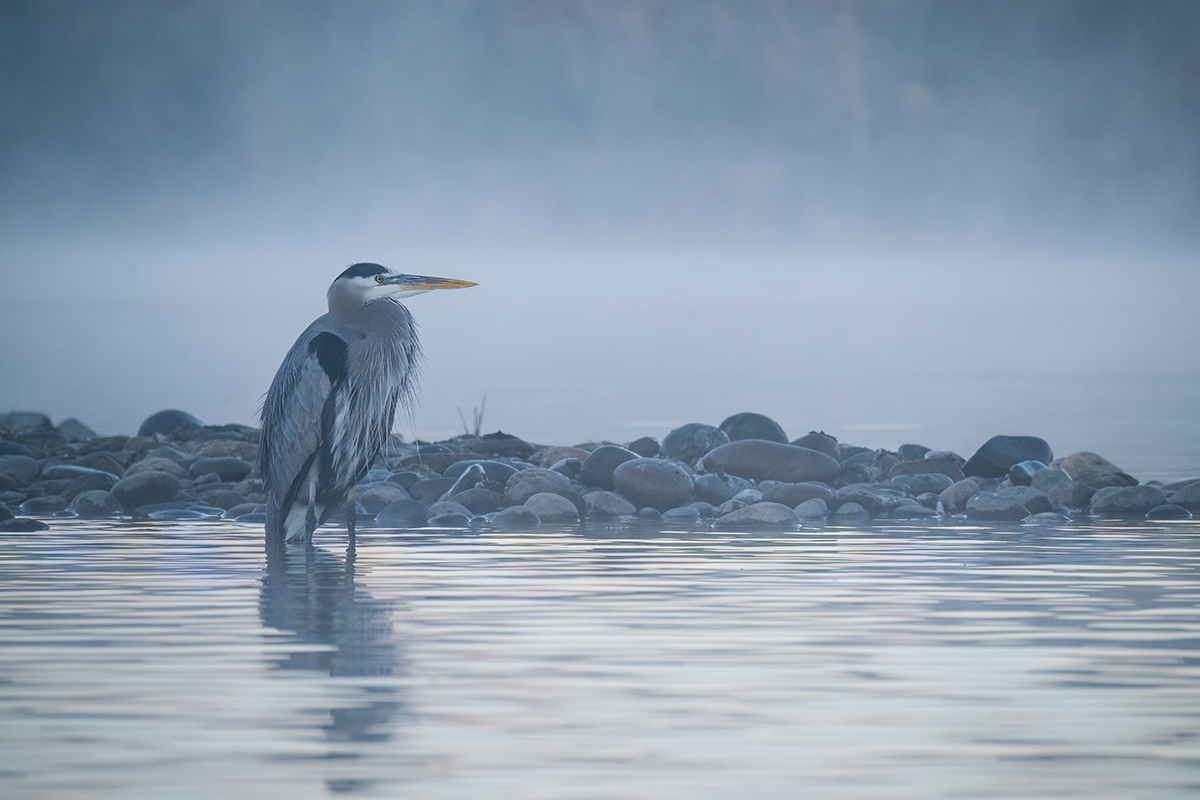Have Kayak, Will Photograph
Lewis Kemper and his Tamron 70-300mm ultra-telephoto zoom, for Nikon Z mount, scout California’s American River for local wildlife.
Share the article:
More Photo Tips | Video Gallery | Photo Gallery | Enewsletter sign-up
By Jenn Gidman
Images by Lewis Kemper
If you’re looking for Lewis Kemper, you’ll often find him floating in his kayak on the American River in Sacramento, California, camera in hand and eyes open for the native birds and wildlife congregating in the water and along the shore. “From when I start pulling the kayak from my house to when I put it in the water is a total of 12 minutes,” he says. “So I’ve become familiar with the area’s animals, especially the birds, who typically hang out in the same spot every morning for two weeks or so and then suddenly change their habits". I’ve gotten to know their personalities, which makes it easier for me to photograph them.”
To capture the local feathered and furry residents, Lewis taps into his Tamron 70-300mm Di III RXD ultra-telephoto zoom lens for his Nikon Z camera. “At just 5.8 inches long and weighing only 19.2 ounces, this lens is so small, light, and easy to carry,” he says. “When you’re kayaking, you often have to hold the camera with one hand while you’re holding a paddle with the other to steer yourself or break the current, so that compactness and light weight is important. The other big thing I appreciate about this lens is its versatility—I love being able to zoom in to capture the animals’ expressions up close, but it’s also very handy to be able to zoom out to capture more of the scenery as well. And I’m always pleased with how sharp my images turn out with this lens.”
Lewis’ goal on the water is to document the wildlife’s behavior, and he strives to do so under the best lighting conditions possible. “I look for the lighting I want first, then hopefully track down a subject that will enter that scene,” he says. “Once the birds or animals enter the frame, I gravitate toward two things: a striking profile, which many birds tend to have, and eye contact, especially if it’s a mammal like a river otter. That’s why you’ll often hear me talking to the animals as I’m floating along in the kayak, telling them how cute they are. I want them to notice me and get curious so they’ll look my way for a portrait.”
Lewis’ baseline settings when he’s on the water are usually around 1/640 of a second at F/10, with an ISO that varies based on how light or dark it is. “I’ll tweak from that starting point,” he says. “I can sometimes get away with as low as 1/500 of a second, but if it’s a really dark morning and the kayak is drifting, as it often does, my images won’t be sharp.”
One of the challenges of photographing on the water is trying to stay steady in the kayak. “To stabilize, I bring my elbows in close to my body,” Lewis says. “If the water is calm enough, I’ll rest the paddle across the kayak and then rest my elbows on the paddle as a sort of brace to hold my camera steady.”
That challenge is offset by the advantage of becoming one with the birds on the water. “Many of the birds will allow you to get a lot closer to them when you’re in the kayak than if you’re on land,” Lewis says. “I can be just 4 feet away from a bird and take photos for up to 45 minutes, if I sit quietly and wait for it to approach. I’ll even talk to it and tell it to move more into the light for me. They don’t always listen, but I do try.”
Read on to see how Lewis uses the 70-300mm Z-Mount on his kayaking adventures.
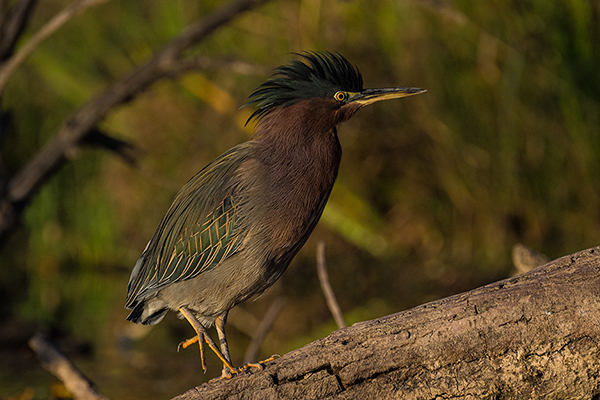
70-300mm (300mm), F/8, 1/1600 sec., ISO 800
Click image to view larger
I waited for a while for some kind of movement from this green heron, which finally came when it moved its foot. I also waited until the bird got to a spot where there wasn’t a terribly busy background with lots of sticks and other distractions. I couldn’t get any closer than 15 feet, so being able to zoom all the way in to 300mm was key. I was also able to achieve a fairly shallow depth-of-field. I typically take photos like this at around F/8 or F/10 because I want to make sure that if the bird turns toward me, that its eyes and beak will be sharp. My favorite part of this image, though, is the tufts on the top of its head that are sticking up. A bird’s “bad hair day” is always fun to photograph.
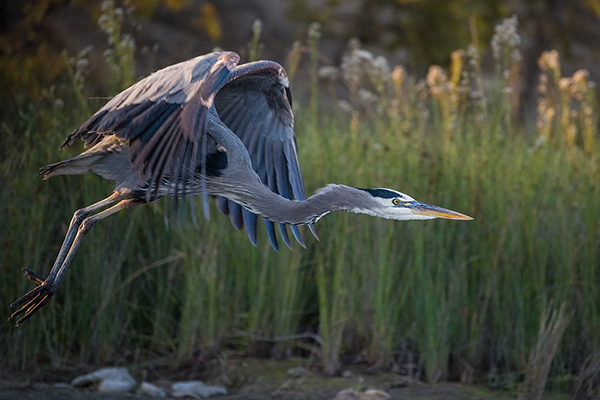
70-300mm (229mm), F/6.3, 1/1000 sec., ISO 2000
Click image to view larger
This blue heron had just taken off, so it's pushing hard. With those first couple of strokes, the heron has to work up a lot of lift to get off its perch or the ground, so there's a lot of force going on in the wings. I was pretty close to the bird here, so you can see the motion in the closer part of its wings, which are moving up and down. However, the body isn’t going up and down, it’s moving left to right, so I was able to freeze that motion. My favorite part of this image, though, is the light hitting the back of the heron’s legs and feet.
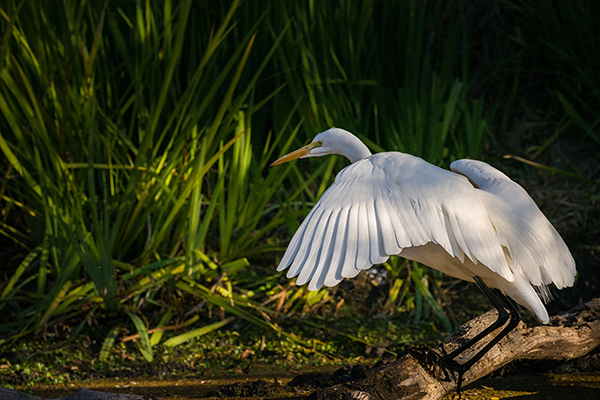
70-300mm (227mm), F/10, 1/800 sec., ISO 400
Click image to view larger
Great egrets, which are huge birds, fish along the shore and catch these tiny fish that are maybe an inch or two big. I’m not even sure how they muster up enough energy from these little fish to go out and catch some more. They’ll sit there staring at the water for 20 minutes, then dive in for one tiny fish. This one had just landed on that log and was gazing into the pool below to see if there was a meal there. It was the perfect photo opp, as the bird had come from a shady, busy, ugly area to this simpler background, with that nice warm glow on its wings.
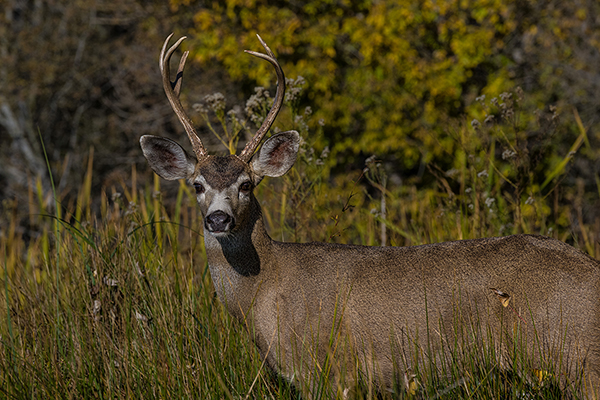
70-300mm (234mm), F/11, 1/1250 sec., ISO 400
Click image to view larger
This black-tailed deer, which I spotted from about 20 feet away, was close to the shore. It was walking away from me, so I whistled to get its attention. As soon as it turned to look at me, I took the photo. I wanted to make sure I captured most of its body but still included a good amount of the environment, which is why I zoomed in to 234mm instead of all the way to 300mm. This also goes back to what I mentioned earlier about how eye contact is key to creating a compelling animal portrait.
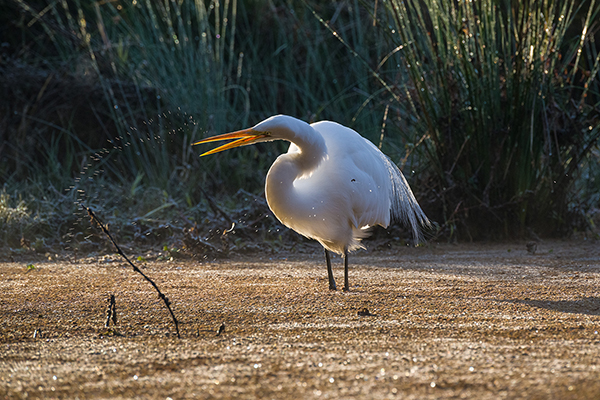
70-300mm (300mm), F/10, 1/640 sec., ISO 1000
Click image to view larger
During Thanksgiving week, I went to this one spot every morning. I photographed this bird in the same spot on a couple of those days. Once they get into their routine, they’ll be there all week. I couldn’t have been more than 7 feet away when I took this photo. The bird had caught a tiny fish, flicking the fish into its mouth and down its throat. When it did that flick, it created that spray of water, which was beautifully backlit.
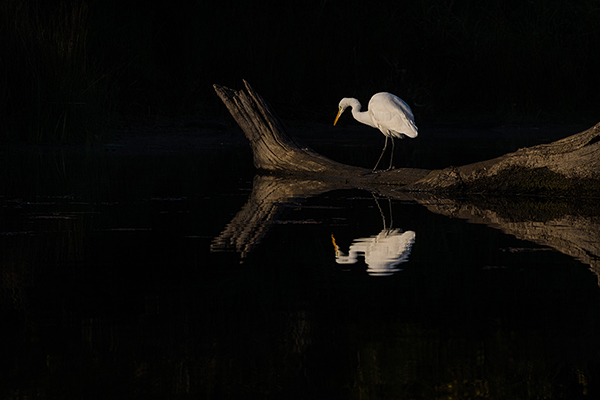
70-300mm (229mm), F/16, 1/1250 sec., ISO 640
Click image to view larger
I’ve been photographing the same area every weekend for eight years, so I know where certain lighting situations are going to happen. This bird was originally in more of a backlit area with lots of fog around it, and when it took off and started to fly, I had a feeling it was going to land on this log, which it did. I simply did a 180 in my kayak so I could photograph this scene, where the lighting was so different. This is one of my favorite types of scenarios—on the edge of light, where the subject is lit up and everything else falls into solid black shadow.

70-300mm (300mm), F/8, 1/640 sec., ISO 3200
Click image to view larger
Winter is my favorite time of year to kayak, because I’ll often encounter these misty or foggy mornings. A friend and I went out together on this particular day. It was a gorgeous scene, with that monochromatic vibe and the mist rising off the water and an overall mood. Plus, as I mentioned, I love a good profile when it comes to birds. I captured this image, and when I posted it on Facebook, someone wrote to me to tell me that a painting she’d completed looked just like my photo.

70-300mm (300mm), F/9, 1/640 sec., ISO 640
Click image to view larger
We were keeping our distance from the river otters that day, making huffing noises to get them to look over at us. For most of the time we were near them, they were swimming around in an area that didn’t have a lot of light; it wasn’t worth taking a picture. Then, finally, they swam to a better-lit spot, where all the gold grass and trees were reflected in the water, and the ripple in the water was reflecting the blue of the sky. One of the otters suddenly poked its head up out of the water and stared straight at me. I thanked it for the photo—I always thank the animals when they cooperate.
To see more of Lewis Kemper’s photos, check out his website and Instagram.
More Photo Tips | Watch Videos | Learn More About Tamron Lenses | Photo Gallery
